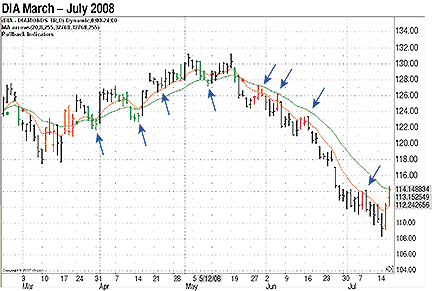options
Option For An Optionable
Second Chance Options
Optionable stocks allow traders to use short-term strategies that combine technical analysis with the right option strike price and realistic targets to provide an edge.
What could be better than picking up a quality stock for pennies on the dollar? And not only during times of economic distress, but also during times of economic growth. Optionable stocks make it possible to pick up a quality stock for pennies on the dollar by allowing traders to “lease” good companies as a substitute for actually owning the stock outright and for far less money than it would cost to purchase the underlying stock. Buying puts and calls on stocks offers greater leverage with limited risk than buying the stock outright. Of course, like any lease agreement, it is time limited. And if the price of the stock you leased doesn’t move quickly enough in the desired direction during the specified time limit, you can lose your initial investment.
However, just as problematic as selecting the right stock is knowing when to purchase an option on that stock. The usual mantra for option traders begins with: If you think price is going up, buy a call; if you think price is going down, buy a put. There is no better illustration of the difficulty in predicting price turns than the 2008 crude oil market. Analysts began calling for a top when a barrel of crude neared $100 and continued calling for a top as it soared beyond $120, $130, and $140. Then they claimed crude oil would climb to $200 a barrel. Wrong again! Crude oil peaked in July at $147, which led to a steep decline in oil-related stocks as crude oil prices subsequently plummeted below the $70 a barrel mark.

FIGURE 1: DIA March to July 2008. The chart of the diamonds (DIA) ETF with eight- and 20-period exponential moving averages shows a rising trend as the shorter-term moving average remained above the longer-term moving average until price double-topped in May and then entered a declining period in which the shorter moving average stayed below the longer moving average. Arrows mark the clearly defined price retracements toward the moving averages during the uptrend in March—May and the downtrend from May to July, which could have provided good entries for short-term trades.
As a technical analyst, I would rather wait until price turned a corner and began a trend reversal. Unfortunately, by that time, the cost of the option premium has usually increased and a trader would need to pay extra for the same option strike price. So without having to consider more complex option strategies, what’s a trader who prefers dealing with simple puts and calls to do?
This article explores a short-term strategy that uses technical analysis tools and concepts to give traders a second chance to make money buying put or call options after a top or bottom may be in place.
The basic strategy
The approach is based on a standard trend-following strategy of buying or selling retracements — that is, buy dips in an uptrend and sell rallies in a downtrend similar to those seen in the chart of the Dow Jones Industrial Average exchange traded fund (Etf) (Dia) in Figure 1.